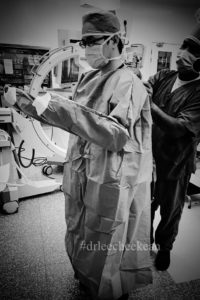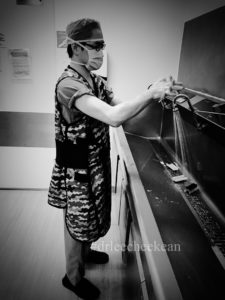
General Orthopaedic Surgeon focuses more on the body’s musculoskeletal system which includes joints, bones, ligaments, muscles, nerves and tendons. An Orthopeadic Spine Surgeon is an orthopaedic surgeon who further specialized in the diagnosis and treatment of spinal conditions and diseases.
Orthopaedic spine surgeons often provide both surgical and non-surgical treatment to patients of all ages, although some orthopaedic spine surgeons will too focus on treating just children (paediatric) or adults.
Orthopedic Surgeons
Orthopedic surgeons may be Medical Doctors (MD) or Doctors of Osteopathic Medicine (DO) who have completed surgical residency focused on the treatment of musculoskeletal conditions. Orthopedists specialize in the diagnosis and treatment of almost all joints and bone disorders, such as:
- Arthritis
- Bone tumors
- Hand injuries and deformities
- Spinal disorders
- Sports injuries
- Total joint replacement
- Trauma
Some orthopedic surgeons focus their practice exclusively on spine surgery, some on other types of joints (e.g. hips, knees, shoulders), and some split their practice among two or more areas.Some orthopedic surgeons focus their practice exclusively on spine surgery, some on other types of joints (e.g. hips, knees, shoulders), and some split their practice among two or more areas.
Dr. Lee Chee Kean focuses more on spine surgery.
 Some orthopaedic spine surgeons exclusively treat certain spinal problems such as degenerative disorders, scoliosis, or a particular region of the spine (cervical/neck, lumbar/low back).
Some orthopaedic spine surgeons exclusively treat certain spinal problems such as degenerative disorders, scoliosis, or a particular region of the spine (cervical/neck, lumbar/low back).
Below are Spine Conditions and Procedures for your reading pleasure:
Conditions
- Degenerative disc disease (wear and tear)
- Herniated disc (a.k.a prolapsed disc / slipped disc)
- Deformity like scoliosis and kyphosis
- Spondylolisthesis
- Spinal trauma i.e. compression fracture, burst fracture, Chance fracture, fracture dislocation etc.
- Spinal infection, for instance pyogenic spondylodiscitis and tuberculous spondylodiscitis.
- Spine tumour, both primary tumour and secondary metastasis.
- Osteoporotic spine fracture
Procedures
- Lumbar Artificial Disc Replacement surgery
- Vertebral Body Tethering (Non Fusion) Scoliosis Correction
- Decompression surgery i.e. laminotomy, foraminotomy, medial facetectomy, laminectomy, corpectomy etc.
- Microdiscectomy
- Spinal fusion surgery through either anterior, posterior or combination anterior and posterior.
- Lumbar interbody fusions i.e. Posterior Lumbar Interbody Fusion (PLIF), Transforaminal Lumbar Interbody Fusion (TLIF), Anterior Lumbar Interbody Fusion (ALIF), Lateral Interbody Fusion (DLIF/XLIF) and Oblique Lateral Interbody Fusion (OLIF).
- Minimally invasive spinal surgeries such as MIS-TLIF, DLIF, XLIF, OLIF, Minimally Invasive Spinal Stabilization (MISt), endoscopic discectomy, etc.
- Deformity correction and fusion surgery for scoliosis and kyphosis.
- Spinal Osteotomies like Smith-Peterson osteotomy, Ponte osteotomy, pedicle substraction osteotomy, partial pedicle substraction osteotomy and vertebral column resection (VCR).
- Vertebroplasty and Kyphoplasty.

